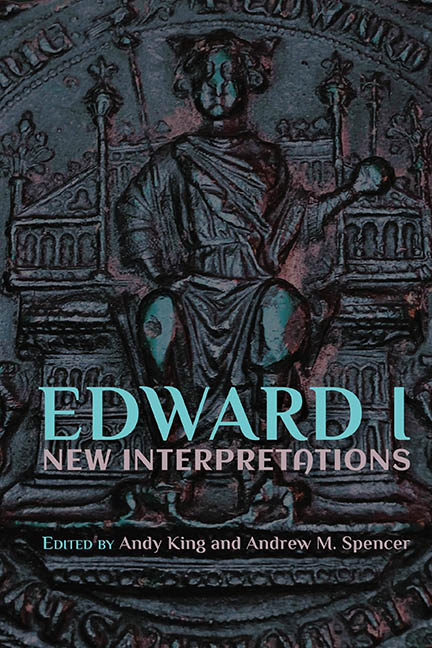Book contents
- Frontmatter
- Contents
- List of Contributors
- Acknowledgments
- Abbreviations
- Genealogy of Edward I
- Introduction
- 1 The Lord Edward and the Administration of Justice across his Apanage, 1254–72
- 2 A Tale of Two Ministers: Robert Burnell, Walter Langton and the Government of Edward I
- 3 Law and Order in the Reign of Edward I: Some New Thoughts
- 4 Magnates, Ritual and Commensality at Royal Assemblies: Bogo de Clare and Edward I’s Easter Parliament, 1285
- 5 Royal Daughters and Diplomacy at the Court of Edward I
- 6 Hearts and Bodies: Edward I and the Scottish Magnates, 1296–1307
- 7 Edward I and the Blessed Virgin Mary
- 8 Letters and Political Discourse under Edward I
- 9 Crisis? What Crisis? 1297 and the Civil War that Never Was
- Index
7 - Edward I and the Blessed Virgin Mary
Published online by Cambridge University Press: 21 March 2020
- Frontmatter
- Contents
- List of Contributors
- Acknowledgments
- Abbreviations
- Genealogy of Edward I
- Introduction
- 1 The Lord Edward and the Administration of Justice across his Apanage, 1254–72
- 2 A Tale of Two Ministers: Robert Burnell, Walter Langton and the Government of Edward I
- 3 Law and Order in the Reign of Edward I: Some New Thoughts
- 4 Magnates, Ritual and Commensality at Royal Assemblies: Bogo de Clare and Edward I’s Easter Parliament, 1285
- 5 Royal Daughters and Diplomacy at the Court of Edward I
- 6 Hearts and Bodies: Edward I and the Scottish Magnates, 1296–1307
- 7 Edward I and the Blessed Virgin Mary
- 8 Letters and Political Discourse under Edward I
- 9 Crisis? What Crisis? 1297 and the Civil War that Never Was
- Index
Summary
IN recent years students of England's Plantagenet kings have paid ever closer attention to considerations of royal piety. In particular, scholars have gradually begun to assert that sacral kingship was not the preserve of the English kings’ Capetian rivals. One striking feature of later Plantagenet piety was devotion to the Blessed Virgin Mary, and the emergence of the concept of England as Mary's dowry: as represented in both the Wilton Diptych and an altarpiece formally in the English College in Rome. Clive Burgess has noted that the Virgin Mary and Saint George were adopted by English kings in the fourteenth century as special patrons, thereby appropriating saintly sponsors ‘once the special province of the French’. The Blessed Virgin had in fact been important in England for many centuries. England's association with the Virgin was firmly established by the time of the Conquest. In the second half of the tenth century and the eleventh century an intense and lively interest had developed, particularly in the south of the country. It is not clear that there was, as was once believed, a hiatus in English royal interest in the Virgin Mary. Nicholas Vincent has demonstrated that it was considerable at least from the reign of Henry I until the reign of Henry III. In particular, Henry III's special dedication to the Virgin found its expression in his liturgical practices, artistic commissions and patronage of Marian centres of devotion. As will be shown in the following, Henry successfully transmitted his special interest in the cult of the Blessed Virgin to his successor, Edward I. While Edward I's interest in his father's favourite saint, Edward the Confessor, was comparatively lukewarm, he was much more willing to adopt the Virgin as his special patroness. It is the argument of this chapter that Henry III actively encouraged his son's early dedication, and that the success of this encouragement finds reflection in three miracle stories – all of which are set in the period prior to the death of Henry III. The king's itinerary and surviving royal accounts (emanating from the royal wardrobe and chancery) will be scrutinised to demonstrate the various ways in which Edward's devotion materialised. The chapter will conclude by arguing that Edward's devotion to the Virgin Mary increased in the latter years of his reign, perhaps bolstered by the encouragement of members of the Dominican Order.
- Type
- Chapter
- Information
- Edward I: New Interpretations , pp. 125 - 142Publisher: Boydell & BrewerPrint publication year: 2020



